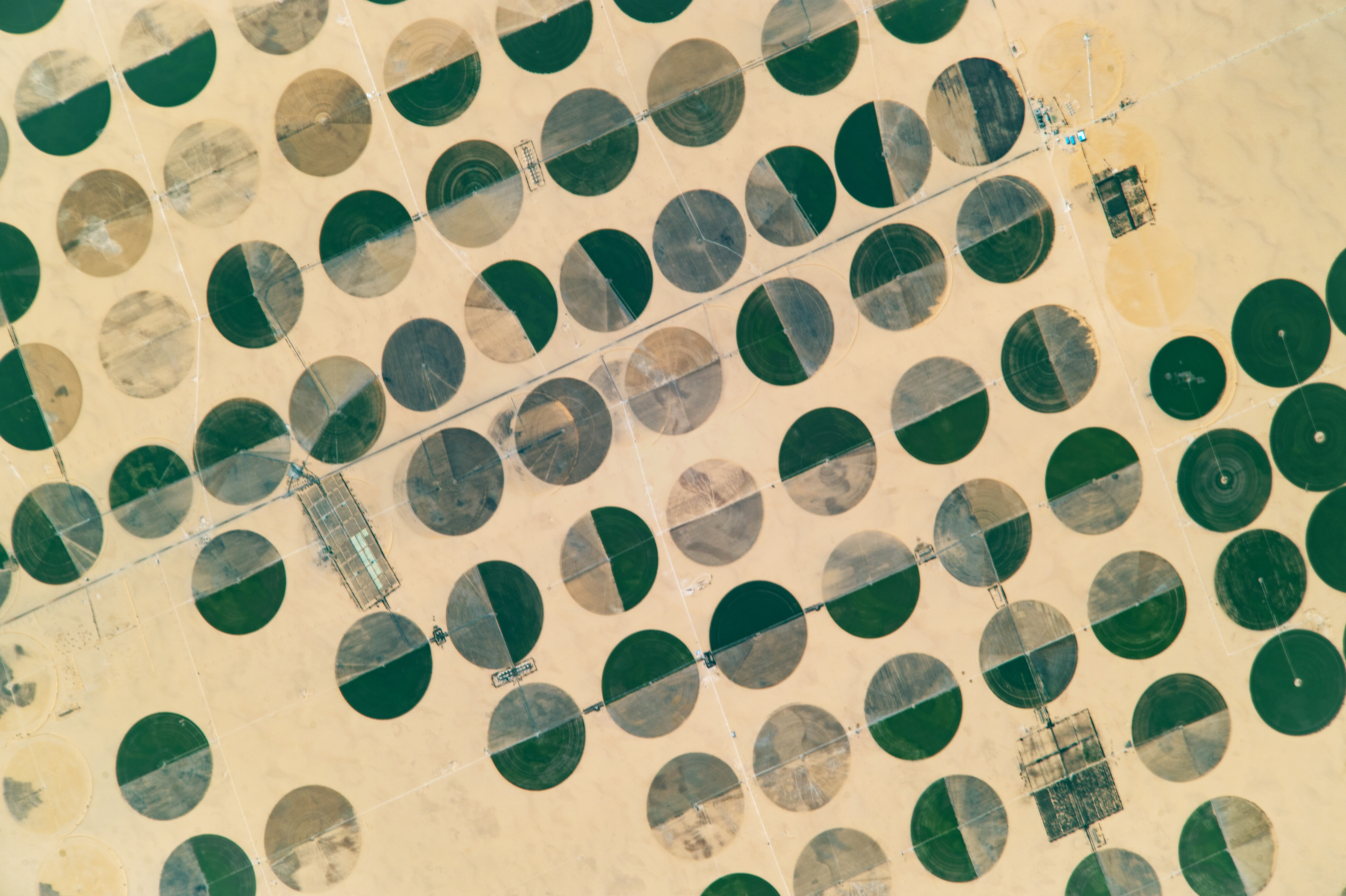E.T. Art? Crop Circles Look 'Alien' from Space

Seen from space, these discs look more like modern art than like potatoes.
But that — plus wheat and chamomile — is what these "crop circles" likely are, according to the NASA Earth Observatory, which posted this photo of agricultural fields in Sharq El Owainat in southwest Egypt yesterday (Sept. 18). An astronaut aboard the International Space Station took the photo.
The water to grow these plants comes from an ancient body of water beneath the sand called the Nubian Sandstone Aquifer System, which stretches over an 850,000-square-mile (2.2 million square kilometers) area beneath Egypt, Chad, Libya and Sudan, according to a 2013 study in the journal Environmental Science and Toxicology. It has been periodically recharged with water during glacial periods and was likely last refilled with water prior to or during the most recent glacial period, which ended about 11,700 years ago, according to a 2014 study in the journal Quaternary Research. [Photos: Mysterious Crop Circles]
To make the circles pictured, water is drawn to the surface and sprinkled onto crops through slowly spinning pipes using a process called center-pivot irrigation.
Of course, rotating, human-made sprinklers don't make all crop circles, the elaborate geometric designs that at times take the shape of spirals, other times keys and even jellyfish. The patterns could also be made using a GPSdevice programmed with a pattern along with a laser used to create a straight line between points, suggested Richard Taylor, director of the Materials Science Institute at the University of Oregon, in 2001 in the magazine Physics World.
He investigated how human artists could use microwaves to make the fanciful designs, responding to the discovery that the crops used in the patterns had been exposed to microwave radiation. Some people took that finding as evidence that aliens or the CIA created the circles. If the joints of plant stalks are exposed to microwaves, they expand, causing the plant to flop over without breaking, which matches the state of stalks found in many crop circles, Taylor told Popular Science.
Whoever made them, one thing's for sure: Crop circles are suffused with an alien beauty.
Sign up for the Live Science daily newsletter now
Get the world’s most fascinating discoveries delivered straight to your inbox.
Original article on Live Science.











